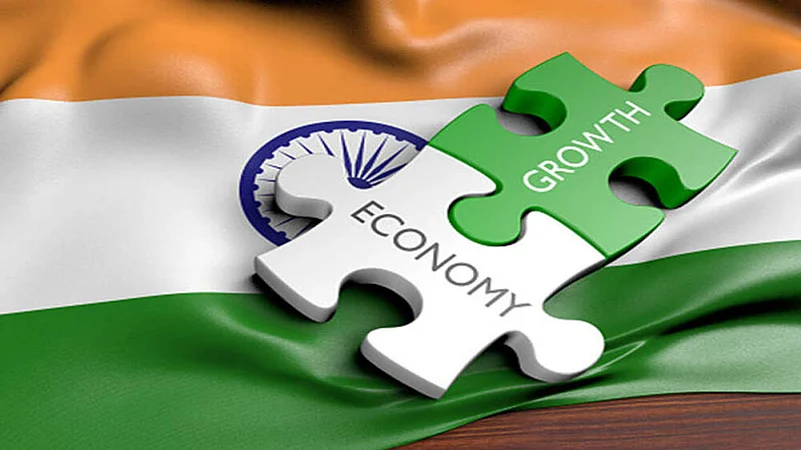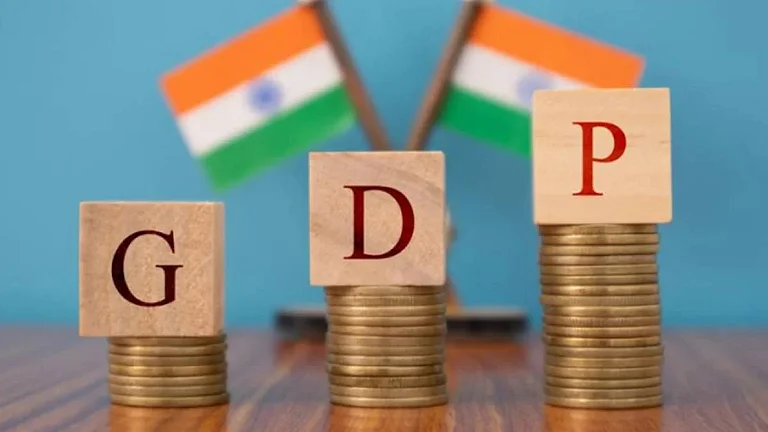India’s current account stood at a deficit of $9.4bn in the first quarter of FY25 from a surplus of $4.6bn in the fourth quarter of FY24. The switch from surplus to deficit was led almost entirely by a $13bn of deterioration in trade balance (Q1 FY25 deficit at $65bn against $52 bn in Q4 FY24).
Net invisibles moderated by $1bn but stayed broadly steady at a surplus of $55bn. This is in line with expectation as the balance of payments (BoP) data release is quite lagged and most of the internals, such as trade deficit, services balance, foreign direct investment (FDI) and foreign institutional investment (FII) are known by then.

While software exports rose during the quarter, exports in the “other business services” category were unchanged. Services imports increased, bringing down the services surplus by $3bn.
Forex Reserves Swell
Capital account surplus also moderated in Q1 FY25, largely on account of softer FII inflows. During Q1 FY25, the momentum in debt FII inflow moderated as the bond inclusion related inflow normalised. As a result of higher current account deficit and weaker capital inflows, the BoP surplus softened from $31bn in Q4 FY24 to $5.2bn. Foreign exchange reserves increased by $6bn during the quarter, from $646bn to $652bn.
A marginal deterioration in current account deficit is likely in Q2 and Q3 FY25 to 1.5-2% of gross domestic product (GDP), and seasonal improvement expected in the final quarter of the fiscal. To sum up, FY25 CAD is likely to aggregate at 1% of GDP, which portrays a healthy external account and manageable levels from India’s macro stability point of view.
A marginal improvement in exports at 2% year-on-year is likely, led by inventory normalisation in the US and India gaining market share in the world’s largest economy. However, given that non-oil non-gold imports are largely concentrated in industrial goods, it is bound to lead to a parallel rise in non-oil non-gold imports. Oil prices have softened to $71-72 a barrel, but gold imports have risen owing to reduction in import duty in India. A relatively sharper rise in imports is likely to widen the monthly run rate in trade deficit from $20bn in FY24 to $23bn in FY25. Net surplus in services is also likely to rise 14% year-on-year.
Balance of Payments Surplus
Dollar capital flows are likely to improve given the commencement of monetary easing in the US and Europe and continued easing in China. Japan appears to be on the other side of the spectrum. However, prima facie, it appears that carry trade inflow in India was muted to start with given that the real rate arbitrage was higher for the US and Latin American economies than emerging market economies in Asia.
We continue to project a BoP surplus of around $40-50bn, despite a paltry $5bn inflow in Q1. Consequently, foreign exchange reserves could scale up to $700bn by the end of this fiscal. There have been queries on the adequate level of foreign exchange reserves, given that holding them is not without cost. But as India has also been included in a couple of emerging market bond indices, it lends additional volatility to dollar capital inflows in the future and the Reserve Bank of India (RBI) may desire to have an additional war chest to manage these volatilities. Further, from a reserve money and liquidity point of view, a Rs 3-4trn of RBI’s balance sheet accretion (purely due to foreign exchange assets build-up) is entirely manageable.
The writer is chief economist, SBI Mutual Fund. Views expressed are personal.


























